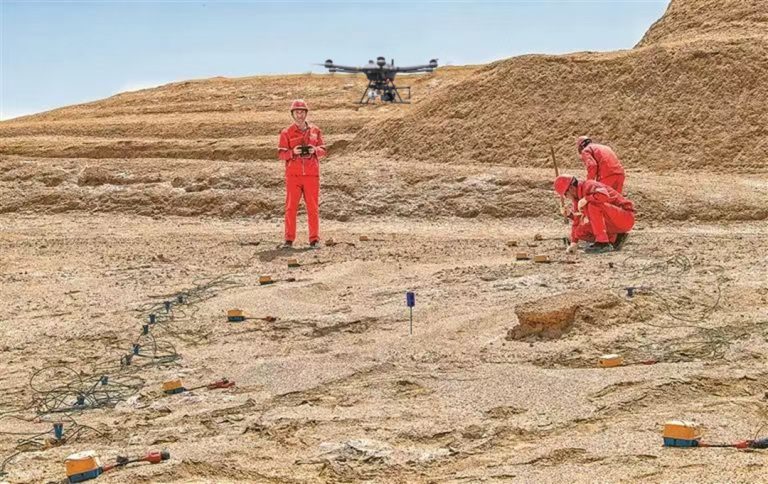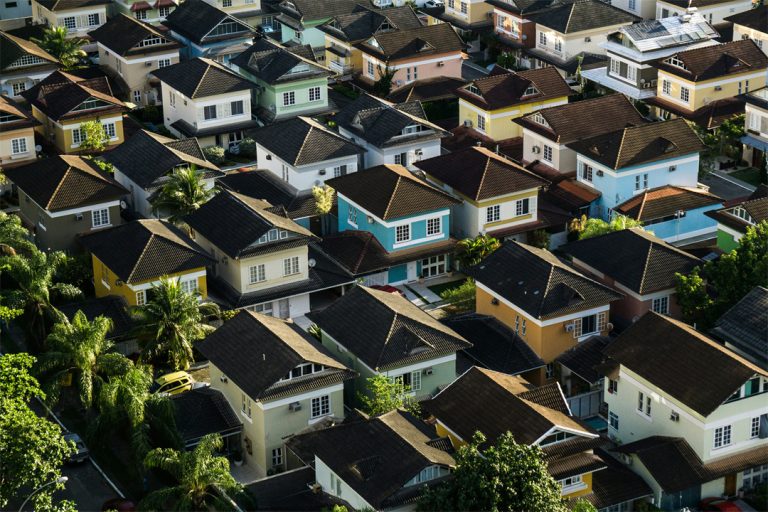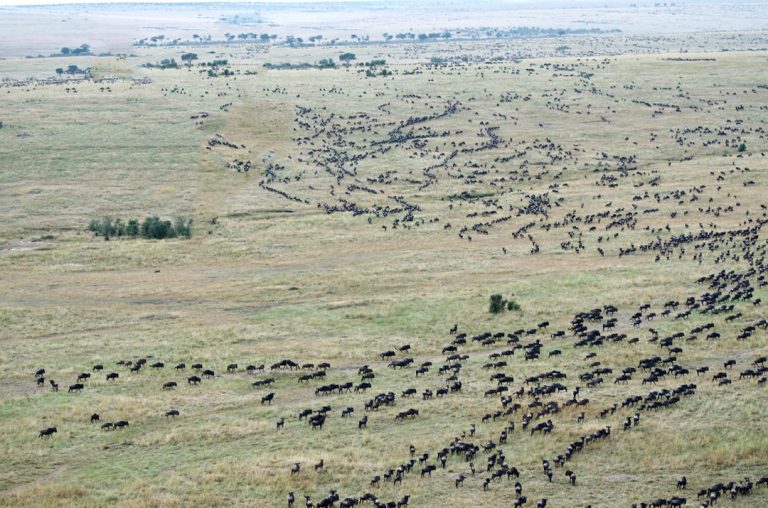Night Vision Drone: Most Comprehensive Guide in 2025
Commercial drones have proven to be an important tool for public safety, which assist emergency inspectors on a daily basis to carry out their missions. These air robots provide an additional set of eyes that can help first responders quickly assess and respond to situations while providing valuable situational awareness.
But the reality is that the job of first responders doesn't end when the sun goes down. On the contrary, most search and rescue operations are conducted at night or in low-light conditions. From search and rescue operations to crime fighting, night vision drones can immediately identify the scene in the dark, providing an extra margin of safety for first responders.
In this blog post, we'll discuss what night vision technology is, how it works, the best drone with night vision, and much more
Let's dive right in.
What is night vision for drones?
Unlike some nocturnal animals, such as owls and cats, which see well in the dark, humans need light to distinguish their surroundings. Although the pupil changes to allow vision to adapt to ambient light, the human eye has no night vision, making it almost impossible to discern anything in the dark or at night.
Fortunately, there are devices, optics, or image capture accessories that allow you to see in the dark. These devices are called night vision cameras, and they can be equipped with drones for filming and recording at night.
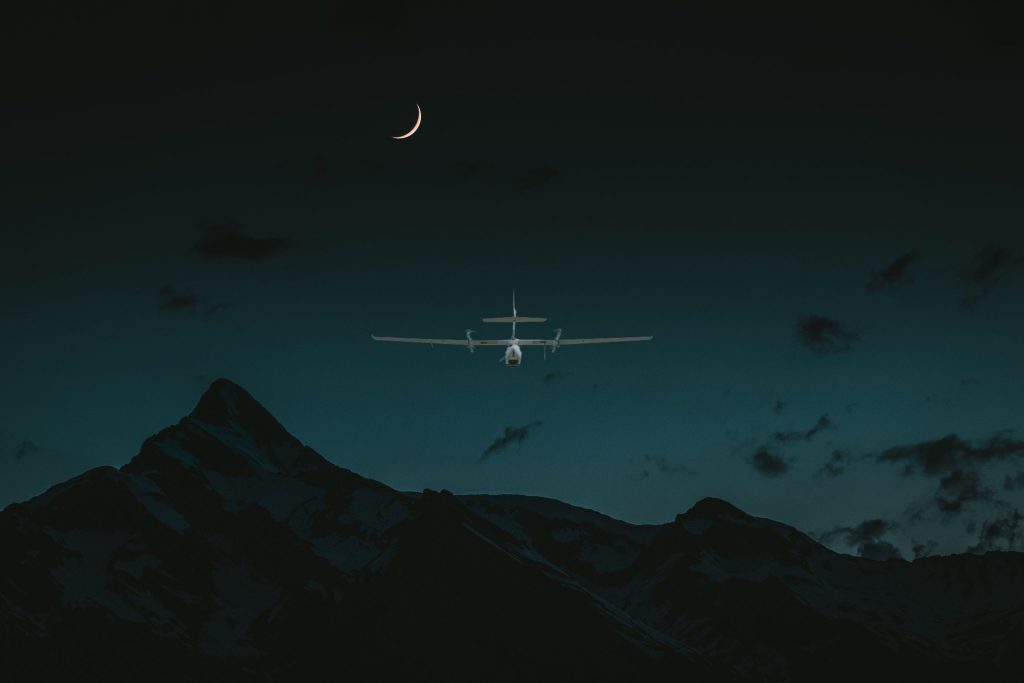
How do night vision cameras work?
Night vision refers to two different types of technology, both of which work in quite different ways, depending on the technology used. Let's take a look at each one.
Starlight or low-light camera
Starlight cameras, also called low light cameras, collect and amplify light from stars, the moon, and other objects in the night sky to provide imaging in conditions where traditional cameras cannot function.
The basic components of all starlight night vision cameras include a lens, image intensifier tube, phosphor screen, eyepiece, and power supply. Light amplification technology converts a small amount of light energy from the stars into electrical energy (electrons). These electrons grow exponentially through electrical and chemical processes and then hit a phosphor-coated screen, forming those green-toned images you might see in movies and on TV.
Starlight cameras have larger image sensors with wider apertures and reduced shutter speeds to help the camera collect more light. These sensors often work in conjunction with noise suppression techniques to provide higher picture quality.
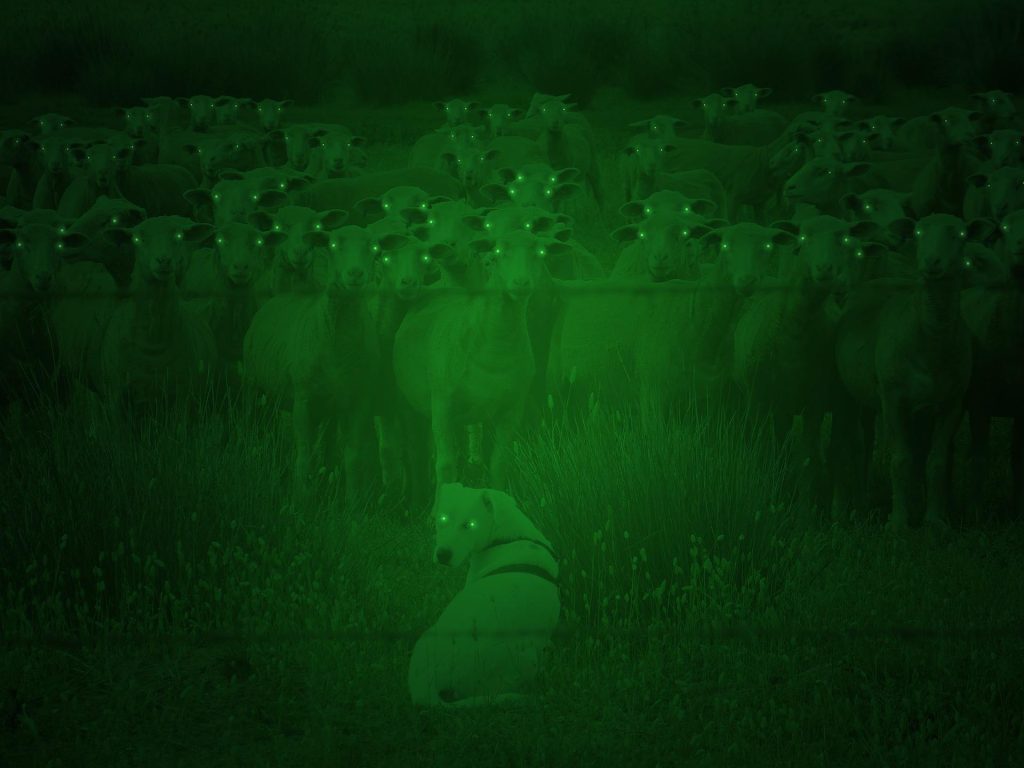
Infrared (IR) and thermal camera
An infrared camera (or thermal imaging camera) is a camera that detects heat energy or heat signatures emitted by living and inanimate objects. All everyday objects emit infrared radiation due to the heat they produce, including ice, but this radiation is invisible to the human eye. The higher the temperature of an object, the more heat radiation it emits. A thermal camera is equipped with a highly sophisticated lens and sensor system that captures these temperature waves to form a thermal image or a color map showing the value of the not temperature.
Infrared cameras use infrared LED lighting placed at the camera lens to capture visible information. Regardless of the environmental conditions, infrared light measures the heat from the object captured by the lens. Therefore, this type of camera can be installed in a completely dark area.
Images from infrared vision are not in color, but in gray tones and do not have the same clarity as daylight or artificial light images, but can be used for general identification in most cases.
Starlight night vision vs. thermal imaging: what are the differences?
People often confuse starlight cameras with thermal cameras. From the above, you already know how the two types of night vision cameras work. By comparing them, you can easily see the obvious differences between starlight night vision and thermal imaging.
- The biggest difference between a starlight camera and a thermal imaging camera is how they work. Starlight cameras use an image enhancement system to amplify the light in a scene and convert it into a green-tinted image, while thermal imaging cameras use infrared sensors to convert the invisible infrared energy emitted by an object into a visible thermal image.
- Starlight cameras require enough light and contrast to create usable images, while infrared cameras produce images from heat and small thermal differences between objects and can work in complete darkness.
- Starlight cameras are affected by dust, smoke, cloudy nights, rain, and fog just like our eyes, but thermal imagers are not.
- Starlight cameras are inexpensive as an outdated technology, while thermal imaging is a popular technology and more expensive.
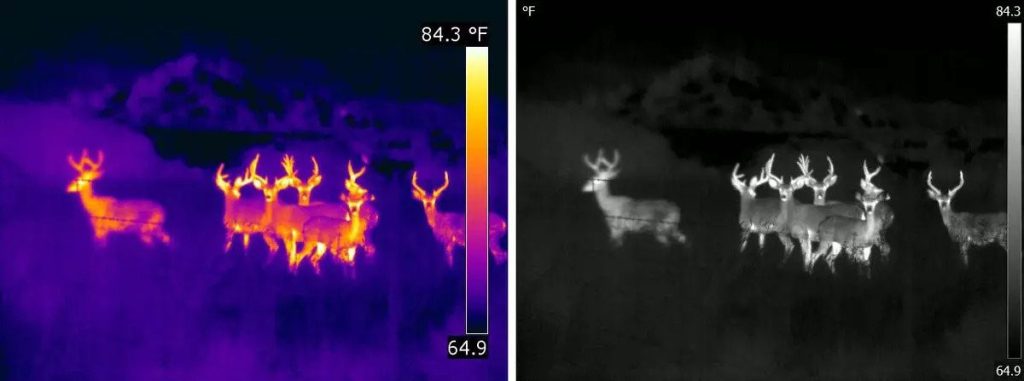
Source from flir.com
Thermal vs. infrared camera
Both types of cameras work on the same principle, i.e., they record infrared radiation emitted by bodies and objects. For this, people usually confuse thermal imaging cameras with infrared cameras, but in fact, they have some differences.
- Infrared cameras are sensitive to waves of one micron (10-6) in length, while thermal cameras are sensitive to waves of ten microns (10-5) in length.
- Thermal imaging cameras are used to measure the thermal radiation of a target and can be used to detect temperature faults in electrical installations, insulation defects in buildings, and thermal leaks; they can also detect the presence of people in a safe area, or detect sources of fire.
- Infrared cameras are mainly used in the dark with additional illumination; for example, for taking night shots of TVs. Thermal imaging cameras can also provide images at night with better image quality and without additional illumination.
- Thanks to their advanced optics, thermal imaging cameras can accurately detect temperatures at greater distances than infrared cameras.
Do any drones have night vision?
Most mid-level consumer drones on the market can be equipped with thermal cameras to provide accurate, non-contact temperature measurements from the air. Nowadays, many professionals are benefiting from thermal drones.
Drones with night vision cameras can help you map the entire underground pipeline or power grid while being able to examine specific details and issues, giving you more information than ever before. With these night vision drones, you can quickly inspect areas that require ladders or bucket trucks to reach and identify potential hazards, minimizing the risk to inspectors and engineers.
How do I add night vision to my drone?
Almost all drones can add some type of night vision capability. You can choose to put a specialized light or thermal camera on the drone frame or gimbal.
The most economical and practical way to do this is to use a lighting system. When the drone can evenly illuminate the area the camera is viewing, the drone camera can operate in color mode at night, just as it does during the day.
You can also pick a small thermal imaging camera and attach it to the drone frame. Note that you must attach the thermal imaging camera to the drone along with a high-quality gimbal to provide stable photos.
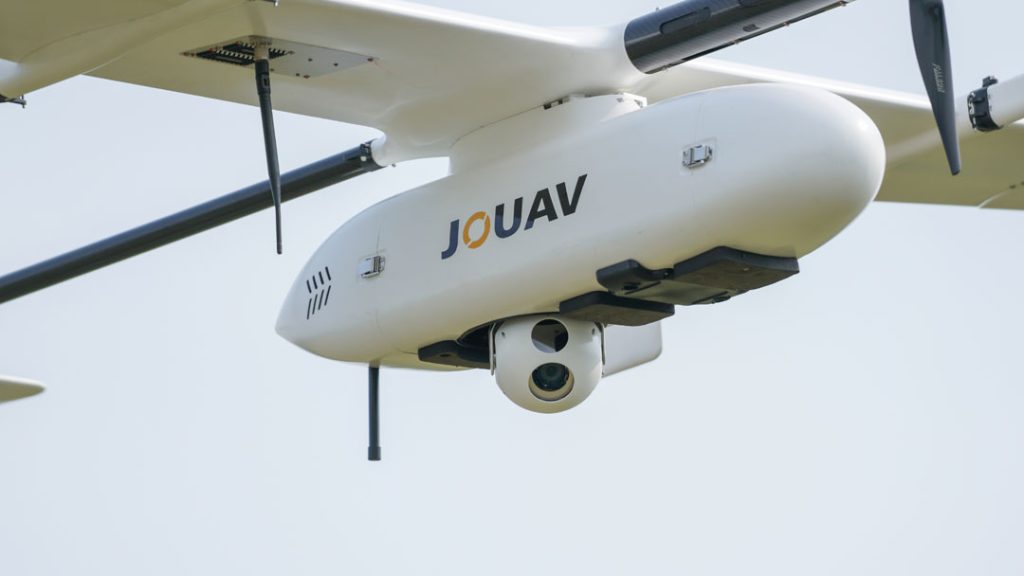
Which is the best drone with night vision?
Want to fly your drone at night? Some night surveillance drones have great features or specs to capture nighttime video perfectly. They usually use infrared and thermal imaging technology.
JOUAV CW-15D - Cheapest night vision drone
The JOUAV CW-15D is the cheapest night vision drone on this list, with 180 minutes of flight time and a maximum payload of 3kg. Versatile and compact, the CW-15D has a built-in dual-sensor MG-120E, a high-definition 640 x 512 pixel thermal imaging camera, and a 10.8-megapixel vision camera with 30X visible zoom.
You can switch between visible, thermal, or split-view images to meet different mission requirements, such as searching for missing persons, displaying insulation while inspecting roofs and humidity problems, identifying illegal smuggling and poaching at night, patrolling mines or construction sites, etc.
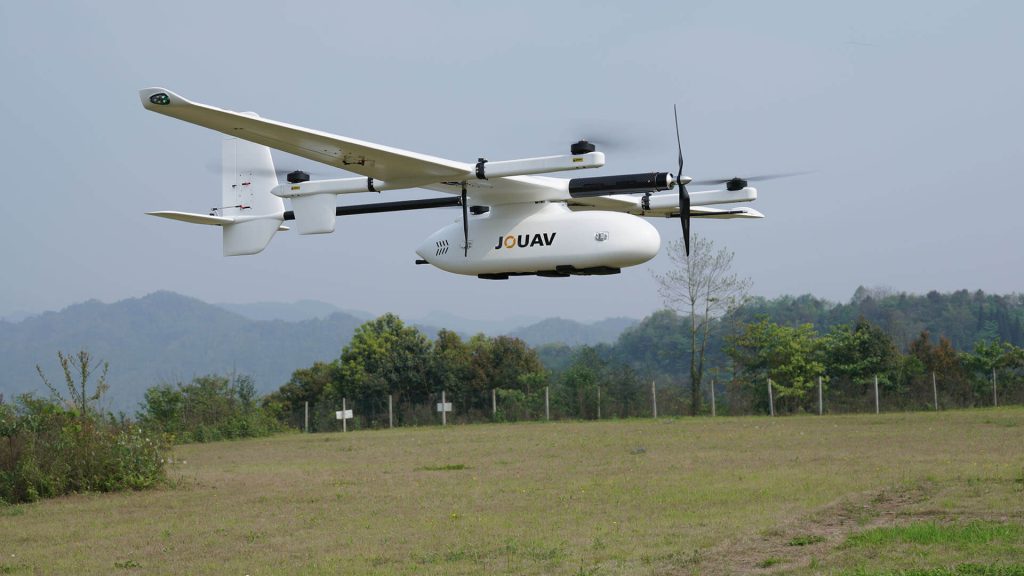
JOUAV CW-25D - Best thermal night vision drone
With 360 minutes of flight time and a cruising speed of 100km/h, the JOUAV CW-25D is a hybrid gas-powered drone that ensures effective surveillance no matter how wide the mission area is. Pair it with the MG-150E dual-sensor solution and you'll be able to see what the human eye can't, whether you're on a search and rescue mission or monitoring a location after dark. The MG-150E gimbal camera is equipped with a 30x zoom high-resolution camera, a laser range finder covering distances up to 4000m, and a 640×512 px radiometric thermal camera.
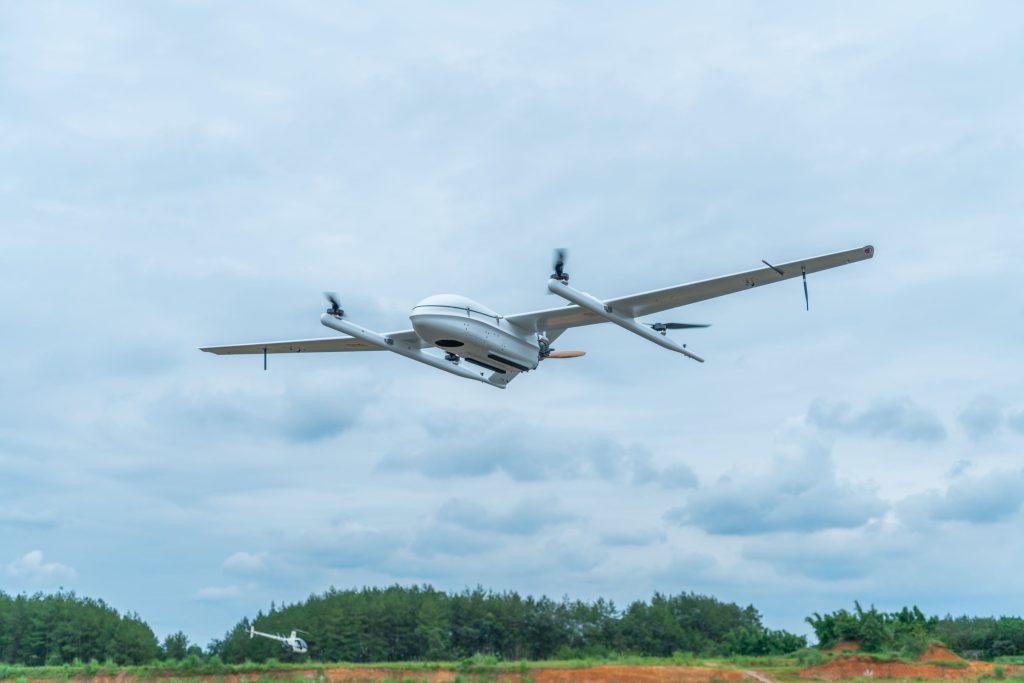
JOUAV CW-25DE - Silent drone with night vision
JOUAV CW-25DE is designed specifically for night operations and can be equipped with the MG-120E gimbal. This sensor combines a visible light camera with 30X zoom capability, a 640*512 thermal sensor, and a 3-axis gimbal stabilizer. These hybrid payloads are most powerful when used in conjunction with each other. In low light and challenging conditions, you can dramatically improve visibility by simultaneously zooming in on the thermal and visual sensors on a split screen.
It is an all-electric drone with minimal noise characteristics and zero carbon emissions. As a VTOL drone, the CW-25DE locks the noisy propellers after vertical takeoff to a certain altitude, and then transitions to fixed-wing mode. This ingenious design choice makes it an exceptionally quiet and stealthy alternative to traditional multi-rotor drones. In other words, it's a silent drone, flying through the skies with grace and subtlety.
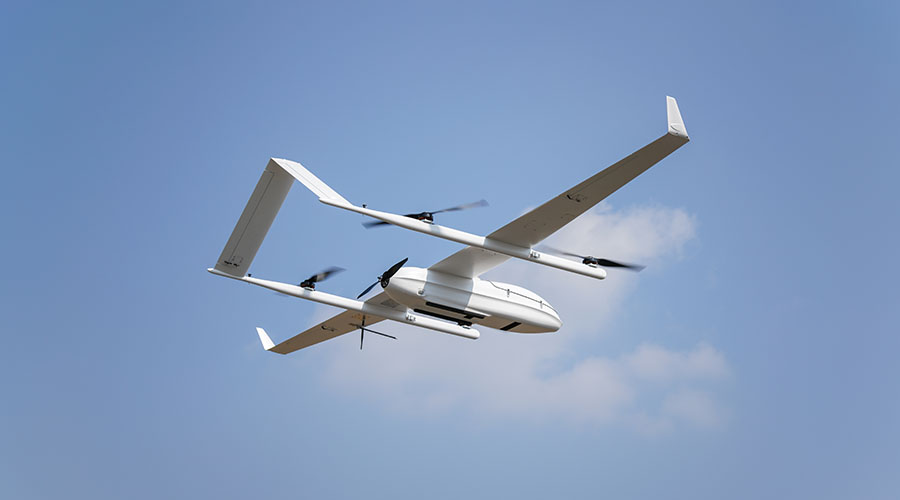
JOUAV CW-30E - Long range drone with night vision
As a long-range night vision drone, the JOUAV CW-30E integrates a 1920 × 1080 pixel zoom camera with 30x optical and 2x digital zoom, a laser rangefinder with a detection range of 50-4000m, and a 640 × 512 px radiometric thermal camera for night vision.
As a hybrid fixed-wing drone, the CW-30E can cover large areas as quickly as a fixed-wing UAV, but can also take off and land in any confined area, even on a moving ship or vehicle, like a multi-rotor. The CW-30E long range drone has a range of up to 200km, 600 minutes of flight time, and a flight speed of 90km/h, making it ideal for large-area inspection missions.
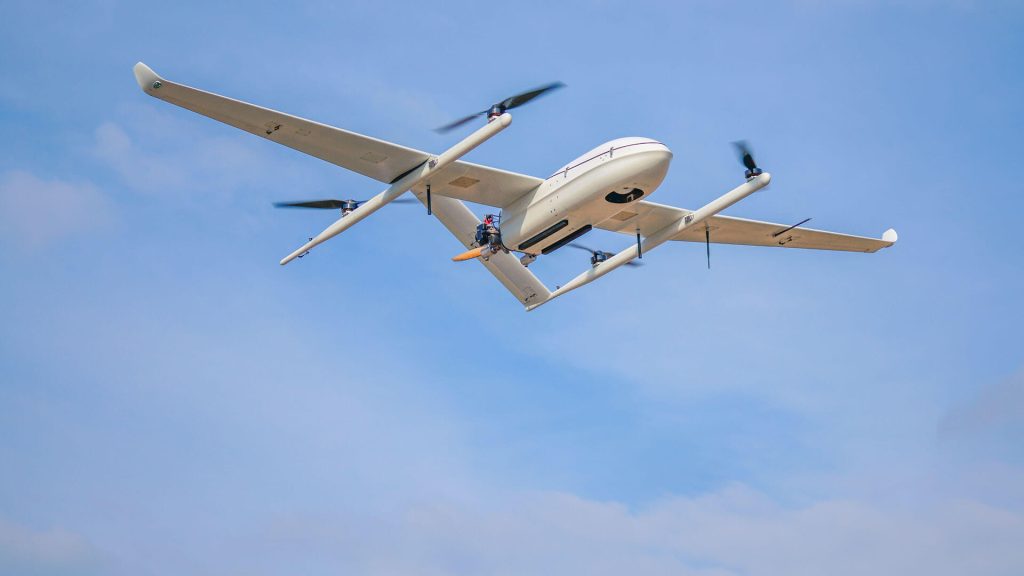
How far can a drone see at night?
A typical drone with powerful illumination can see up to 165 feet (50m) away at night or in low-light conditions. Beyond that distance, the drone can only see a faint shadow that cannot be discerned.
Drones equipped with infrared night vision cameras can also see a fairly limited range, up to about 5 yards. This depends on the intensity of the infrared light used by the camera. Only when the drone is very close to the target object can it pick up the light being reflected.
In contrast, thermal cameras have a much better visual range and are able to see objects several hundred feet away, depending on the variation in thermal emissivity.
Can you fly a drone at night?
It depends on which country you want to fly in. In some countries, flying drones at night is prohibited, such as France.
But you are free to fly your drone at night in the United States as long as you adhere to the new FAA drone laws.
First of all, you must register your drone with the FAA.
Second, if you're a commercial pilot, you'll need to undergo specific training and pass rigorous FAA tests. However, if flying for recreational purposes only, you do not need any training and licenses.
In addition to meeting the FAA's safe flight requirements for drones, when it comes to flying at night, you will also need to install a light on top of the drone and must also have a sufficient flash rate to avoid collisions.
Safety tips for flying drones at night
Flying a drone at night carries more risks than flying during the day because it is more difficult to see. But knowing the potential risks and some useful TIPS can help a lot to fly safely.
Maintaining the Visual Line of Sight
This is necessary during the day as well but is especially important for night flying. The best way to make sure you can see the aircraft at all times at night is to have good lighting on board. It is also helpful to have a visual observer (VO) to help, maybe even two. You may want to plan to fly where there are other external light sources nearby, but be aware that in some cases they can cause chaos.
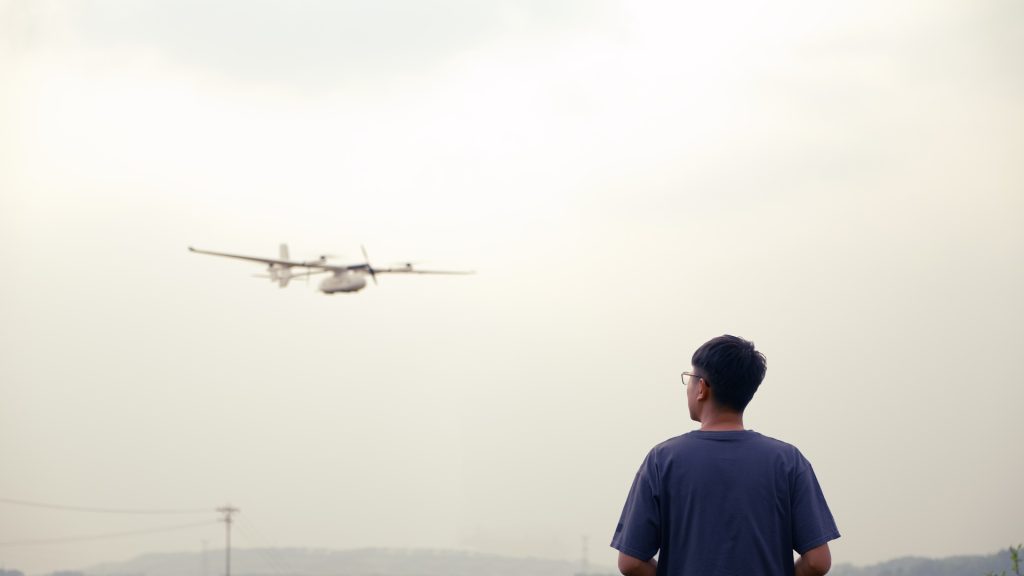
Avoid people, aircraft, and other obstacles.
It is very important to familiarize yourself with the area where you will be flying at night. Know where the obstacles are on the ground and plan how you will handle them in the dark. In any case, you should not fly above 400 feet or in heavily populated air traffic areas.
Know your aircraft's altitude, attitude, and movement
The directional lights on your night vision drone are very helpful in keeping you on the course when flying your drone in the dark. Red and green lights show you which direction your drone is heading, and many drones come with these lights pre-installed, or you can install them yourself. Use the on-screen indicators to keep track of your drone's altitude, and you may want to preset your altitude ceiling to be lower than you would normally fly in daylight. You should also have a plan for what to do if the lights fail or you lose connection with the drone.
Make your aircraft stand out
It is important that other operators of manned and unmanned aircraft can see your drone at night, and the best way to make it visible is to have bright lights on board. The FAA's requirement for commercial drones to operate at night is that the lights be visible from 3 miles away.
Don't assume that your night vision drone's built-in lights are bright enough, because they often aren't. For nighttime drone flights, we recommend the Lume Cube, which is designed specifically for drones and night operations. Not only will it allow you to comply with FAA regulations, but it will also help keep your drone and others safe.
What are night vision drones used for?
Flying at night is a lot of fun and it is a completely different experience. However, beyond the novelty of flying at night, there are many practical and lucrative reasons to fly after dark.
Photography
The primary use of night vision drones is photography. This might include wedding photography, where weddings or receptions and celebrations continue long after dark. Or consider real estate photography, where a potential buyer wants to see what the skyline looks like from an apartment after dark, perhaps a building still under construction.
Cinematography
There are many situations in the film industry that require nighttime aerial filming. Night filming is a basic requirement on the big screen, as well as for commercials, sketches, etc.
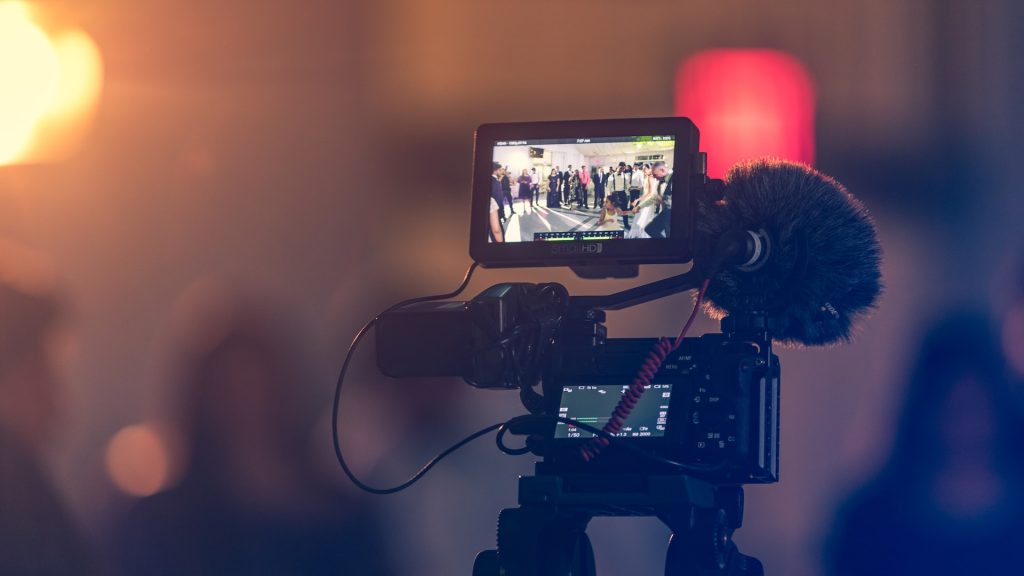
Security
Nighttime is a prime time for perimeter surveillance and patrols of sites such as prisons, power plants, commercial buildings, or construction sites with expensive equipment. Night surveillance drones do an excellent job of conducting security patrols, which are most needed after dark.
Public Safety and law enforcement
Police often need to fly drones at night to conduct surveillance or crime scene investigations, as many nefarious activities take place under the cover of darkness. Search and rescue drones equipped with night vision sensors can help locate missing persons in the dark. Firefighting drones with thermal cameras can be used day and night, to monitor fire scenes and help keep crews safe.
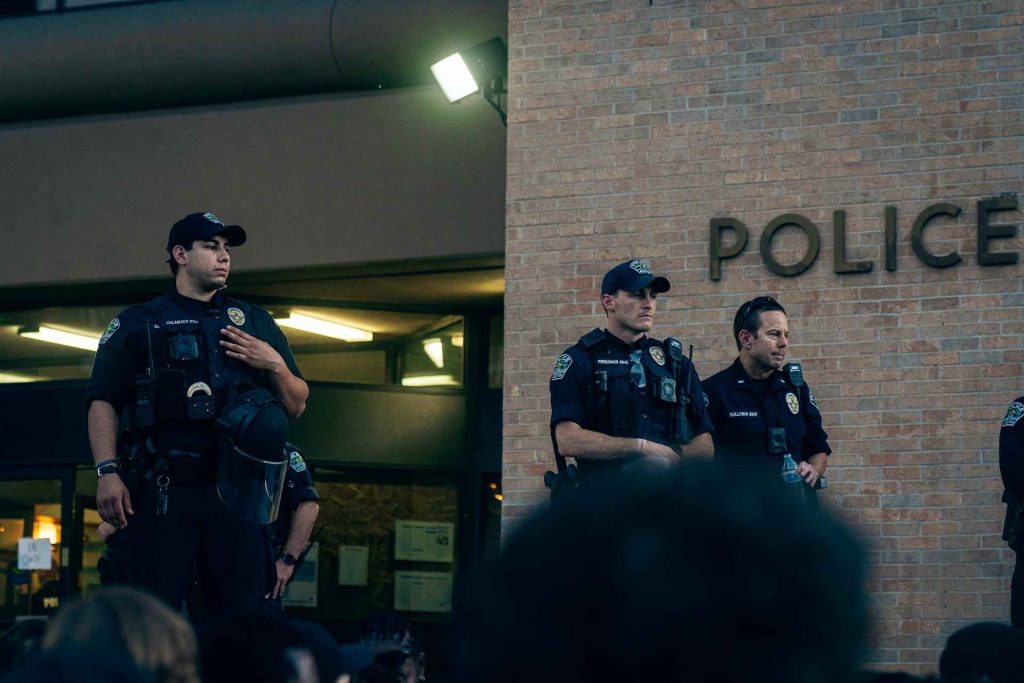
Inspections
Roof inspections or other types of building and infrastructure inspections conducted at night may be more informative in some cases. Thermal night vision drones may be able to detect heat leaks more visibly when surfaces are not exposed to the heat of the sun.
- Read more: Everything your need to know about drone inspections
Wildlife monitoring
Night vision drones have been used for wildlife counts, habitat mapping, behavioral observations, and to provide medical care after forest fires. In addition, these wildlife drones can identify and fight poachers.
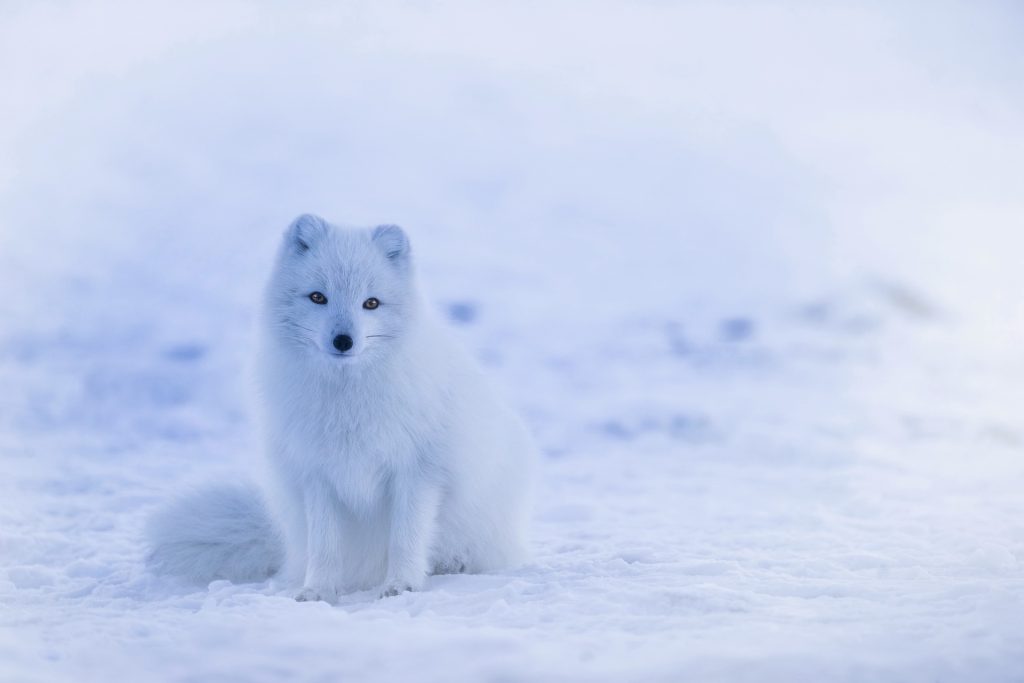
FAQ
Does the military use night vision or thermal drones?
Yes, the military uses thermal imaging night vision drones for a variety of purposes, such as surveillance, target acquisition, and navigation. Infrared cameras can be useful to help the military find enemies in the dark or navigate in low-visibility conditions.
Can thermal be used as night vision?
Yes, thermal imagers are not affected by light which can be used in low light situations or even in total darkness.
Can thermal vision see in the dark?
Yes, thermal imaging helps us to see hotter objects at night, such as people and animals, by detecting infrared radiation to distinguish the relative temperature of objects around us.
Can thermal vision see through walls?
No, thermal imaging cameras cannot see through walls because they are usually thick enough and insulated to block any infrared radiation coming from the other side. If you point the camera at the wall, it will detect the heat from the wall, not what is behind it.
Is night vision the same as thermal imaging?
No, they are different in working principle, usage, and environment of use.
Which is better night vision or thermal?
This is difficult to answer. Both devices have their advantages and disadvantages. Night vision cameras will always have an advantage in identification and qualification, while thermal cameras have an advantage in detection. Whether you should choose a night vision camera or a thermal camera depends on what you need the optics to do and how best to utilize them.
Is infrared cheaper than night vision?
No, infrared and thermal cameras are more expensive than night vision cameras.
How much is a drone with an infrared and thermal camera?
The average price of an infrared and thermal camera drone can go $10,000 and above, depending on the model of the drone and how the model is configured.
What do drones look like at night?
At night, if the drones are far away from you, they will look like small dots of light (red or green) moving across the sky. Some drones will emit a flashing white/green/red light that is visible for miles and you may mistake it for a star.
What do police drones look like at night?
First, you should remember that police drones are commercial (not military) drones, so you shouldn't expect them to look much different from the amateur drones you're familiar with. The biggest difference between police drones and other drones is their strobe lights. Police strobe lights come in both blue and red colors. If you are a few meters away from a police drone at night, there will be a red light on one side of the drone and a blue light on the other. However, if the police drone is far away from you, its blue and red lights will appear together, but the colors can still be distinguished.



